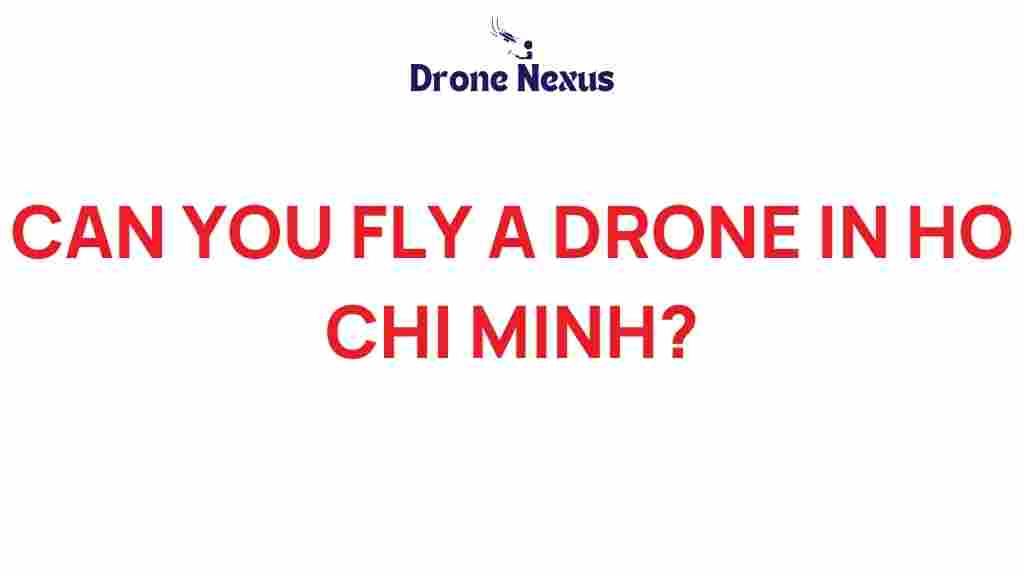Exploring Drone Regulations: Can You Fly a Drone in Ho Chi Minh?
As the use of drones continues to rise globally, understanding the relevant drone regulations becomes crucial for enthusiasts and professionals alike. In vibrant cities like Ho Chi Minh, where the skyline is dotted with skyscrapers and bustling streets, flying a drone can be an exciting way to capture stunning aerial footage. However, before launching your drone into the skies, it’s essential to familiarize yourself with the local laws and regulations governing drone operations. This article will guide you through the important aspects of flying a drone in Ho Chi Minh, ensuring that you remain compliant with the drone regulations in Vietnam.
Understanding Drone Regulations in Vietnam
Vietnam has established a framework of laws and regulations regarding the use of drones, which are primarily governed by the Ministry of Transport and the Civil Aviation Authority of Vietnam (CAAV). Here are some key points to consider:
- Registration: All drones weighing more than 250 grams must be registered with the CAAV.
- Licensing: Pilots flying drones for commercial purposes must obtain a license.
- Flight Restrictions: Drones cannot be flown near airports, military zones, and crowded areas without prior permission.
- Insurance: Commercial drone operators are required to have liability insurance.
Step-by-Step Guide to Flying a Drone in Ho Chi Minh
Now that you are familiar with the basic drone regulations, let’s delve into a step-by-step guide to ensure a smooth flying experience in Ho Chi Minh.
1. Check the Drone Regulations
Before you fly, check the latest updates on drone regulations from the CAAV. Regulations can change, and staying informed is vital.
2. Register Your Drone
If your drone weighs over 250 grams, you must register it. To do this:
- Visit the CAAV website and navigate to the drone registration section.
- Fill out the required form with details about your drone.
- Submit any necessary documents and pay the registration fee.
3. Obtain Necessary Licenses
If you plan to use your drone for commercial purposes, ensure you acquire the appropriate licenses. This typically involves:
- Completing a training course on drone operation.
- Passing a theoretical and practical exam.
- Applying for a commercial pilot license through the CAAV.
4. Plan Your Flight
Before heading out, plan your flight carefully. Consider the following:
- Location: Choose an open area that is not crowded and far from airports.
- Time of Day: Early morning or late afternoon often provides the best lighting for photography.
- Weather Conditions: Check for wind speed and precipitation to avoid unsafe flying conditions.
5. Fly Responsibly
During your flight, adhere to these guidelines:
- Keep your drone within your line of sight at all times.
- Do not exceed the maximum altitude of 120 meters (394 feet).
- Avoid flying over people, vehicles, or private property without permission.
- Respect local privacy laws and avoid capturing images of individuals without consent.
6. Post-Flight Checklist
After your flight, ensure you:
- Safely land and power off your drone.
- Review your footage and check for any issues.
- Report any incidents or accidents to the CAAV if necessary.
Troubleshooting Common Drone Issues
Even with the best preparations, issues can arise while flying your drone. Here are some common problems and how to troubleshoot them:
1. GPS Signal Loss
If you experience a loss of GPS signal, your drone may become unstable. To troubleshoot:
- Try to fly in an open area away from tall buildings or trees that may block the signal.
- Consider recalibrating the compass of your drone.
- If the problem persists, land your drone safely and check for software updates.
2. Battery Issues
A sudden drop in battery life can lead to an emergency landing. To avoid battery issues:
- Always fully charge your batteries before a flight.
- Monitor battery levels during flight and return home early if necessary.
- Carry extra batteries if you plan to fly for an extended period.
3. Inconsistent Camera Functionality
If your camera is not functioning correctly, consider the following:
- Ensure that the camera is properly connected to the drone.
- Check for updates to the camera firmware.
- Review your settings to ensure they are configured correctly.
Conclusion
Flying a drone in Ho Chi Minh can be an exhilarating experience, offering unique perspectives of this dynamic city. However, it is imperative to adhere to the local drone regulations to ensure not only your safety but also the safety of others. By following the outlined steps for registration, obtaining licenses, planning your flight, and troubleshooting common issues, you can enjoy a hassle-free drone flying experience. Remember, the world of drones is ever-evolving, so stay informed and compliant with the latest regulations.
For more information on flying drones in Vietnam, you can visit the Civil Aviation Authority of Vietnam. Additionally, if you’re looking for tips on drone photography, check out this helpful guide here.
This article is in the category Safety and created by DroneNexus Team
